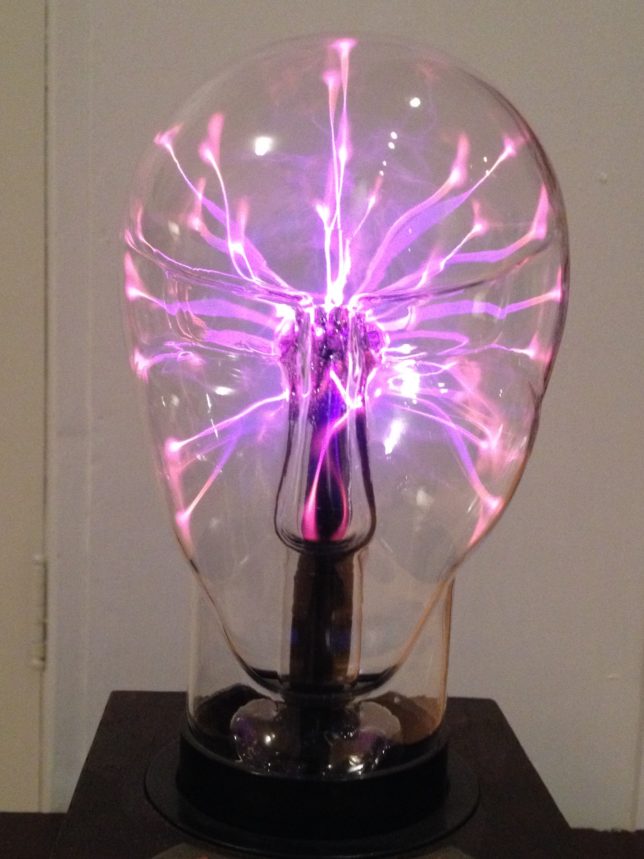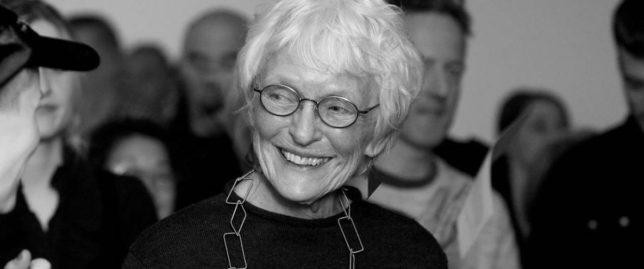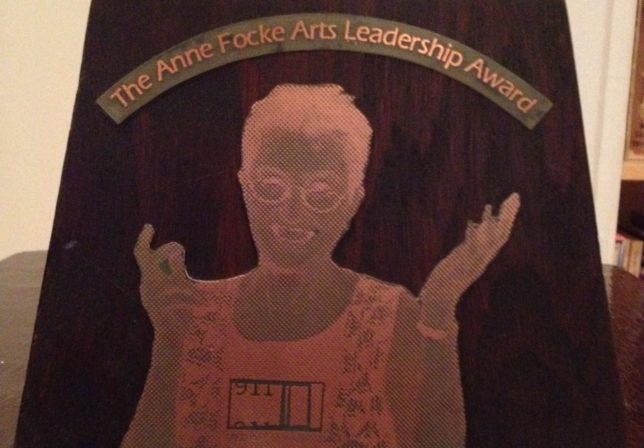Lucy Bernholz is a self-professed “philanthropy wonk.” Among other things she is currently director of the Digital Civil Society Lab at Stanford’s Center on Philanthropy and Civil Society. For the past eight years, I’ve worked with her as editor and “co-conspirator” of an annual monograph. Lucy’s “Blueprint” series is a forecast for philanthropy and the social economy about the ways we use private resources for public benefit. Each year, she identifies big ideas that matter for the coming year and offers a series of annual predictions and critical developments to watch in the future (“glimpses”) .
From the start Lucy has written primarily for readers engaged in the worlds of philanthropy, nonprofits, and social investing. Over the years, though, I’ve increasingly found that what I learn from her informs my thinking and my actions in many ways and is useful way beyond my direct involvement in these fields. So I’m eager to share some of her ideas through excerpts from the most recent Philanthropy and Social Economy: Blueprint 2017, originally published in December 2016. What follows is most of the introduction, a short passage from “Glimpses of the Future,” and a sobering excerpt from her conclusion. At the end of the excerpts, you’ll find more information as well as links that allow you to follow her thinking.
««««««•»»»»»»
From the Introduction…
“We must fight to protect civil society and democracy; they do not defend themselves.”
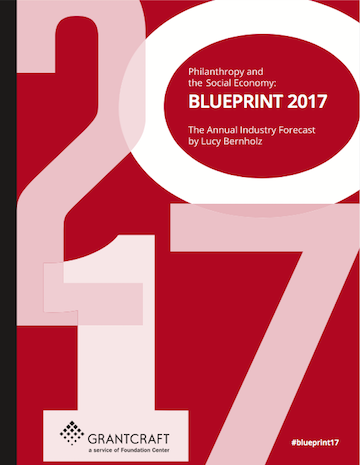 Paradoxes abound. Some global indices show democracy on the rise around the globe, while other measures stress that spaces for civil society are closing. Since democracy depends on civil society, it’s hard to know how both can be true.1 In another head- scratcher, a year that was defined by the politics of lies also saw
an increase in the systemic faith in data and algorithmic analysis as guides to a better future. Resolution of these paradoxes comes down to human action—we must fight to protect civil society and democracy; they do not defend themselves. We must interrogate and make understandable the digital tools and data we use to make decisions, as they are simply encoded versions of our values.
Paradoxes abound. Some global indices show democracy on the rise around the globe, while other measures stress that spaces for civil society are closing. Since democracy depends on civil society, it’s hard to know how both can be true.1 In another head- scratcher, a year that was defined by the politics of lies also saw
an increase in the systemic faith in data and algorithmic analysis as guides to a better future. Resolution of these paradoxes comes down to human action—we must fight to protect civil society and democracy; they do not defend themselves. We must interrogate and make understandable the digital tools and data we use to make decisions, as they are simply encoded versions of our values.
Some truths hold. I spent part of 2016 working with the incredible artists behind the award-winning documentary Big Sonia. The film tells the story of an immigrant in Kansas City. She survived the holocaust, living through and being liberated from three Nazi concentration camps. She raises a family, survives economic changes that redraw the map in her Midwestern suburb, and only in her last decade begins to share her life story publicly. I won’t tell you more—go see the film. But here’s how lasting truths work.
The filmmakers worked for years, and as every artist or author knows, timing a release is tricky business. As it happened, Big Sonia premiered on the big screen on Wednesday, November 9, the day after the U.S. presidential election. Sonia, aged 91, was there. Her story—of resisting fascism; of surviving state-sponsored deportation, incarceration, and cultural destruction; of running a business through economic good times and collapse; and of always standing against the forces of hatred—resonated with amplified power on that particular day. But the story—and its truths—are timeless.
“I believe in democracy, and when my ideas fail at the polls, I work harder as a citizen.”
I did everything I could as an organizer, a voter, and a citizen to bring about a different outcome to the U.S. presidential election. I disagree completely with the candidate and winning coalition’s proposed economic, healthcare, security, and foreign policy proposals. I am scared by and motivated against their language, behavior, supporters, and proposals regarding immigrants, people of faith, people of color, LGBT people, and women. Economic inequality is the problem, but it cannot be fixed by social and political injustice. I believe in democracy, and, when my ideas fail at the polls, I work harder as a citizen.
I am telling you this because I don’t just think about civil society in democracies; my life depends on it. This was true before the U.S. election and will be true long after I stop publishing. That I can publish these words without fear of recrimination from my government is precisely the strength of the system. If I am recriminated against, or if others turn away from these words because I’ve expressed these differences, then that is both the future I fear and the one I write to prevent.
During the U.S presidential campaign, candidates from both major parties faced intense public scrutiny for their charitable activities. This exemplifies an issue—the blurring boundary between politics and philanthropy—that I’ve written about for years in this series and which boiled over in 2016. Similarly, both campaigns were defined by their digital practices—one by a reliance on Twitter and the other by a reliance on private email servers. The summer of 2016 showed us that governments that promise unhackable security will come to regret it (I’m looking at you, Australian census bureau and U.S. Democratic National Committee).
The vulnerability of our election technologies to digital malfeasance makes us wonder if the core act of voting is safe and reliable. There are historical antecedents that can guide us in these times (see Big Sonia, above), but our dependence on digital systems and the ways in which they facilitate both freedom and control, expression and censorship, surveillance and new economic powers is what we face anew.
“We are all digitally dependent now.”
Some might yearn for the pre-digital days of politics, when we didn’t worry about email hacks, server security, or social media campaigns. Those days are gone forever. When we stop and catch our breath, we realize this is true also of civil society. We are all digitally dependent now. This offers opportunity and risk, risk that extends beyond cybersecurity. Our digital dependence shapes the nature of data our nonprofits and foundations collect and what they do with it. It explains why new policy environments—from intellectual property law to telecommunications regulations—now determine who can participate, where, when, and at what cost. And it makes it ever more important to question our core assumptions about what resources we use for social good, how we exchange them, how we will pay for this work, and who will benefit.
This is the eighth annual Blueprint. I’ve spent the year learning with colleagues in the U.S., Australia, Austria, Brazil, the Netherlands, and Sweden. For several years I’ve been arguing that civil society and philanthropy must “assume digital.” The information we gather, store, and exchange electronically and the networks we use to do so are now an integrated part of the way civil society functions. Working internationally is a wonderful way to experience the breadth, depth, and diversity that this dependence takes.
Our digital networks are global, but the knotted mess of national and international regulations on everything from free speech to fundraising forced me to check my own assumptions and biases in each region. What is a nonprofit? What qualifies as philanthropic? Who regulates? What roles do co-ops, impact investing, online giving, text messaging, broadband, open source software, and philanthropy play in this setting? My effort to find answers to these questions informs the way I understand digital civil society, the social economy, and philanthropy in 2017.
From “Glimpses of the Future” . . .
“Digital space can be as closed as it can be open.”
Most discussion of social media, the internet, digital infrastructure, and data in the social sector—at least in wealthy democracies— emphasizes its “democratizing” nature and the ways in which it changes gatekeepers, amplifies voices, and enables mobilization. This is not the whole story, nor is it inevitable. Digital space can be as closed as it can be open. To keep civil society alive in digital spaces, we must change our assumptions about and our usage of the digital infrastructure. Small subgroups of civil society actors have long been trying to shape and protect digital rules and systems, whether that means fighting for broadband access or protecting people’s right to know when the companies they work with have their servers hacked. This now must become the fight for all of civil society, before the space closes and cannot be reopened.
From the Conclusion . . .
“Our dependence on digital data changes civil society.”
The very nature of civil society is changed by our dependence on digital data. The set of rights that civil society depends upon—free expression, free association, and the right to privacy—remain the same. But they manifest differently on Facebook than in the town commons of old.2 The relationships between national laws and norms matter more than ever before because of our global digital systems.
We cannot continue to act as if adapting our “analog” practices to digital resources will work. Digital data don’t work the way that time and money do. Digital infrastructure is not the same place as Speakers’ Corner in Hyde Park, London. We need to create—collectively and urgently—new software code, new organizational practices, and new legal requirements if civil society is to continue to thrive in the digital age.
««««««•»»»»»»
Footnotes
1 Agnes Cornell, Jørgen Møller, Svend-Erik Skaaning, and Staffan I. Lindberg, “Civil Society, Party Institutionalization and Democratic Breakdown in the Interwar Period,” University of Gothenburg, Working Paper, Series 2016: 24, The Varieties of Democracy Institute. Available online here.
2 See Timothy Garton Ash, Free Speech: Ten Principles for a Connected World.
Blueprint 2017 is published in partnership with GrantCraft, a service of the Foundation Center. The monograph can be downloaded for free here.
![]() Blueprint 2017 is licensed under a Creative Commons Attribution-noncommercial-noderivs 2.5 license.
Blueprint 2017 is licensed under a Creative Commons Attribution-noncommercial-noderivs 2.5 license.
Keeping up with Lucy
The best way to follow Lucy’s thinking is on her blog, Philanthropy2173. Subscriptions are free. Two good posts to check out are: “Civil Society Now,” November 11, 2016 and “Not in my name (or my email or mobile number),” January 14, 2017.
Previous years’ Blueprints can be downloaded at grantcraft.org or lucybernholz.com/books.
Information about Stanford’s Digital Civil Society Lab can be found here.
The Lab begins a description of itself this way: “The rapid adoption of digital tools for social and political action has resulted in a complicated new sphere we refer to as digital civil society. Digital civil society includes all the ways people and organizations voluntarily use private resources for public benefit in a digital age.”
![]()
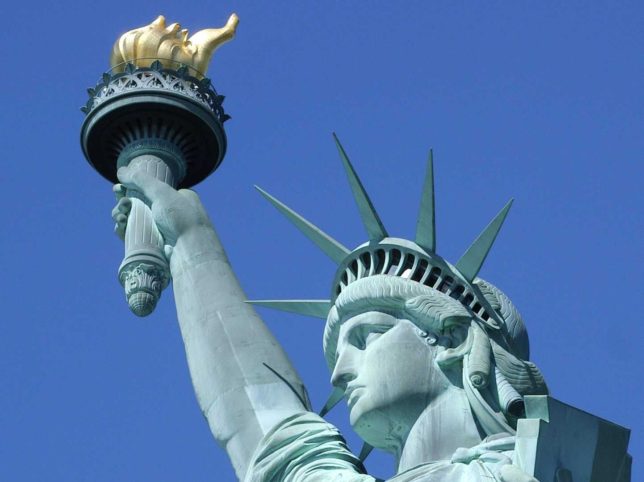 The New Colossus
The New Colossus